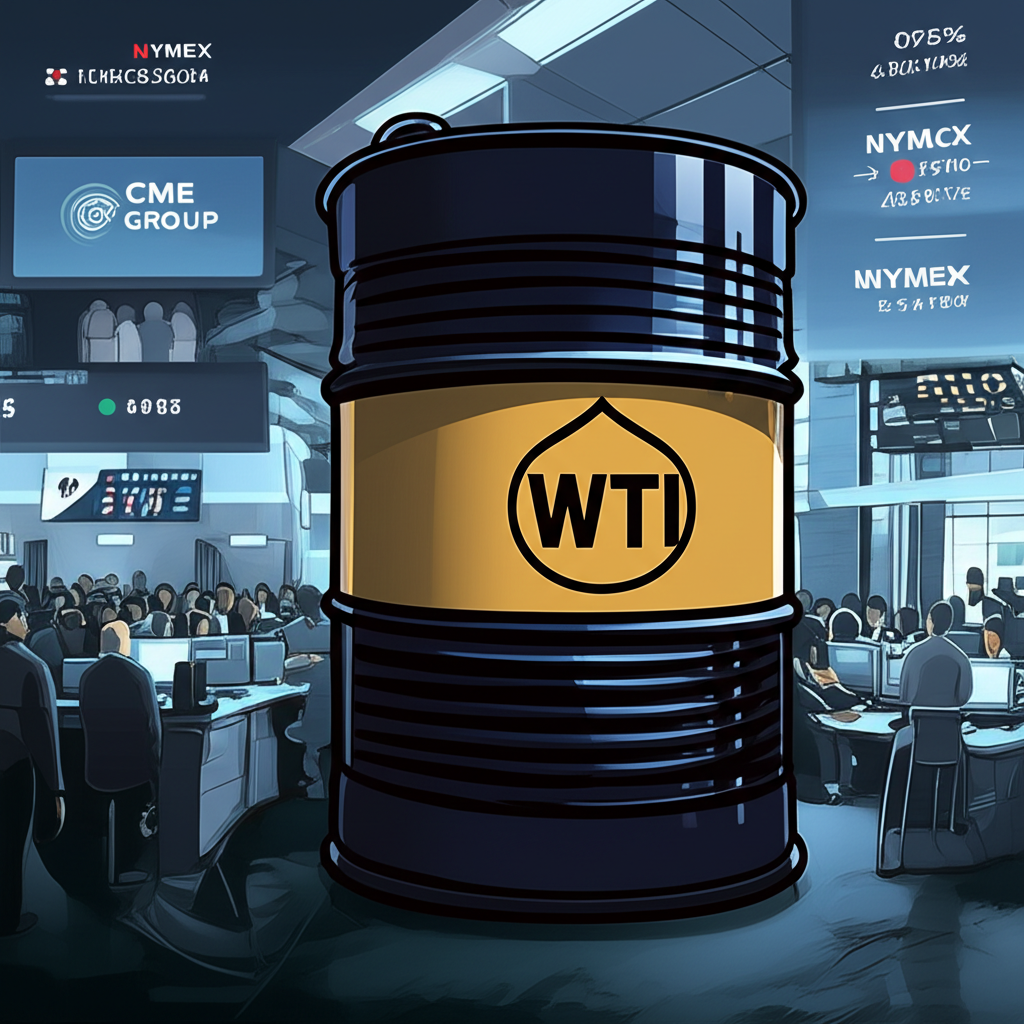
Oil Futures Trading Hours: Navigate the Nearly 24/7 World of WTI and Brent Crude
Table of Contents
ToggleIntroduction: The Pulsating Heart of Oil Futures Markets

The global oil market operates as a high-stakes, interconnected ecosystem where prices shift in real time in response to geopolitical shocks, economic data releases, and supply-demand imbalances. At the core of this system lie oil futures contracts—financial instruments that serve not only as barometers of energy value but also as essential tools for hedging, speculation, and price discovery. For traders, analysts, and institutional investors, knowing when these markets are active isn’t just logistical—it’s strategic. The near-continuous nature of electronic trading has blurred traditional boundaries, creating both opportunities and risks. This guide breaks down the intricate trading schedules of the two most influential crude oil benchmarks—West Texas Intermediate (WTI) and Brent Crude—offering clarity on when the markets open, close, and reset, so you can trade with precision and confidence.
Core Trading Hours for WTI Crude Oil Futures (CME/NYMEX)

West Texas Intermediate (WTI) crude oil futures are a cornerstone of global energy pricing, particularly for the Americas. Traded on the New York Mercantile Exchange (NYMEX), part of the CME Group, WTI contracts are among the most liquid and closely watched financial instruments in the world. Their price reflects not only physical crude supply conditions but also investor sentiment, macroeconomic trends, and trading behavior across time zones. Given its centrality, understanding the exact rhythm of its trading window is essential for managing exposure and capitalizing on market movement.
Understanding the CL Contract and CME Globex
The standard WTI futures contract is known by its ticker symbol CL and is primarily executed through CME Globex, the electronic trading platform operated by the CME Group. Unlike the open-outcry pits of the past, Globex enables seamless access to markets from any location with an internet connection, supporting rapid order execution and deep liquidity. This digital infrastructure underpins the extended trading hours that define modern futures markets, allowing participants from Tokyo to London to New York to engage in real time. It’s a system built for speed, transparency, and global reach—critical attributes in a market where seconds can mean the difference between profit and loss.
Specific Trading Schedule: Open, Close, and Daily Breaks
While often described as nearly round-the-clock, WTI crude oil futures do not trade continuously. Instead, they follow a structured weekly cycle with a brief daily pause.
| Trading Day | Open (ET) | Close (ET) | Notes |
|---|---|---|---|
| Sunday | 6:00 PM | 5:00 PM (Monday) | Trading begins Sunday evening and continues |
| Monday | 6:00 PM | 5:00 PM (Tuesday) | After daily break |
| Tuesday | 6:00 PM | 5:00 PM (Wednesday) | After daily break |
| Wednesday | 6:00 PM | 5:00 PM (Thursday) | After daily break |
| Thursday | 6:00 PM | 5:00 PM (Friday) | After daily break |
| Friday | 6:00 PM | 5:00 PM (Sunday) | Closes for the weekend |
*Note: All times are Eastern Time (ET).*
The trading week begins at 6:00 PM ET on Sunday and runs uninterrupted—except for one key exception—until 5:00 PM ET on Friday. Each weekday, the market pauses for a one-hour break from 5:00 PM to 6:00 PM ET. During this window, the exchange finalizes settlements, processes trades, and performs system maintenance before the next session begins. This break is a critical point for risk assessment, as any open positions are exposed to potential price gaps when trading resumes.
Key Considerations for NYMEX Trading Hours
The 23-hour trading day, broken only by this hour-long pause, reflects the global demand for real-time price discovery. The Sunday evening open allows the market to react immediately to geopolitical developments, inventory data, or economic shifts that occur over the weekend. Meanwhile, the Friday close marks the end of the weekly trading cycle, often bringing increased volatility as traders close or roll over positions. The daily settlement period, though brief, is a structural anchor—it ensures the integrity of pricing and clearing operations, making it a consistent feature rather than an anomaly.
Brent Crude Oil Futures Trading Hours (ICE Futures Europe)

Brent crude oil futures are the global benchmark for seaborne oil, influencing the pricing of two-thirds of the world’s internationally traded crude. Listed on ICE Futures Europe, the Brent contract (ticker: B) is central to energy markets outside North America. Its price reflects the balance between Atlantic Basin supply, OPEC+ policy, and global demand trends. Due to its international scope, Brent trading is designed to accommodate participants across Asia, Europe, and the Americas, resulting in one of the most continuous trading schedules in finance.
The Brent Contract (B) and ICE Platform
The ICE electronic trading system provides seamless access to the Brent futures market, functioning much like CME Globex but with a focus on global time zone alignment. The exchange is engineered to support liquidity across regions, enabling traders in Singapore to react to European data or for New York-based funds to position ahead of OPEC announcements. The platform’s reliability and low-latency execution have made it a preferred venue for both institutional and algorithmic traders, further enhancing market efficiency.
Detailed Trading Schedule for Brent Futures
Brent crude futures operate on a near-continuous basis, with only a minimal daily interruption.
| Trading Day | Open (ET) | Close (ET) | Notes |
|---|---|---|---|
| Sunday | 8:00 PM | 7:00 PM (Monday) | Equivalent to 1:00 AM Monday London Time |
| Monday | 8:00 PM | 7:00 PM (Tuesday) | Continues after brief settlement |
| Tuesday | 8:00 PM | 7:00 PM (Wednesday) | Continues after brief settlement |
| Wednesday | 8:00 PM | 7:00 PM (Thursday) | Continues after brief settlement |
| Thursday | 8:00 PM | 7:00 PM (Friday) | Continues after brief settlement |
| Friday | 8:00 PM | 7:00 PM (Sunday) | Closes for the weekend |
*Note: All times are Eastern Time (ET). Trading hours are largely continuous from Sunday evening through Friday evening, with a very brief daily settlement period around 7:00 PM ET (midnight London time).*
Unlike WTI, the Brent contract does not have a full hour-long break. Instead, ICE implements a short settlement window—often just a few minutes—around 7:00 PM ET, aligning with midnight in London. This subtle difference means trading resumes almost immediately, making the market feel truly continuous to many participants. The weekend closure remains consistent, with trading halting at 7:00 PM ET on Friday and resuming at 8:00 PM ET on Sunday.
Comparing WTI and Brent Trading Hours
While both contracts offer near-24-hour access, their schedules reflect distinct institutional rhythms. WTI’s one-hour pause at 5:00 PM ET creates a predictable daily reset aligned with US market operations, whereas Brent’s near-instantaneous settlement caters to a more globally distributed participant base. The two-hour delay in Brent’s Sunday opening (8:00 PM vs. WTI’s 6:00 PM ET) means that early weekend news is first priced into WTI, creating potential spread dynamics between the two benchmarks. For traders managing both contracts, these nuances can influence timing, execution, and hedging strategies—especially during rollover periods or high-impact news events.
Are Oil Futures Traded 24/7? Demystifying the Continuous Market
The idea that oil futures trade nonstop is widespread—but it’s not entirely accurate. While electronic platforms have extended access far beyond traditional hours, the markets still observe structured pauses.
The “Nearly 24-Hour” Reality
WTI and Brent futures come close to 24/7 operation, but neither trades without interruption. The daily breaks, though brief, are essential for clearing and settlement. Additionally, both contracts halt for the weekend, typically from late Friday afternoon until Sunday evening Eastern Time. They also close on recognized exchange holidays—such as US Independence Day or UK bank holidays—when no trading occurs at all. These closures are not flaws but features: they allow for system stability, accurate pricing, and orderly risk management across the clearing ecosystem.
Electronic Trading vs. Pit Trading: A Historical Shift
The move from open-outcry trading floors to fully electronic systems transformed oil futures accessibility. In the past, trading was confined to the hours of the physical exchange—often just eight hours a day. The launch of platforms like CME Globex and ICE’s electronic network changed everything. Now, traders can execute orders from anywhere, at nearly any time, enabling true global participation. This shift didn’t just extend hours—it reshaped market dynamics, allowing for faster price discovery, more efficient arbitrage, and deeper integration between regional markets.
Factors Influencing Oil Futures Trading Hours
While the core schedule is stable, several external factors can alter trading availability or market behavior.
Market Holidays and Early Closures
Exchanges follow official holiday calendars, and any deviation affects trading. For WTI on NYMEX, US federal holidays like Thanksgiving, Memorial Day, and Christmas lead to either full closures or shortened sessions. ICE Futures Europe, being London-based, observes UK bank holidays such as Boxing Day and Spring Bank Holiday. These dates are published well in advance, but traders must remain vigilant—especially during holiday weeks when liquidity can thin out even during normally active hours.
Daylight Saving Time Adjustments
The transition between standard and daylight saving time can temporarily shift the relationship between time zones. While exchanges maintain consistent local times, the Eastern Time conversion changes. For example, when the US moves into daylight saving time, the ET equivalent of London’s midnight settlement shifts by one hour. This affects how traders in North America interpret global session overlaps. Automated systems may adjust automatically, but manual traders need to double-check their timing references twice a year to avoid missed entries or exits.
Emergency Market Closures and Circuit Breakers
In rare cases, exchanges may halt trading due to extreme volatility, technical failures, or systemic risk. Circuit breakers—designed to pause trading during sharp price swings—can be triggered during major geopolitical events or flash crashes. These are not scheduled, but exchanges issue immediate notifications when activated. While such events are uncommon, they underscore the importance of staying connected to official exchange channels, especially during high-tension periods.
Strategic Implications: Why Trading Hours Matter to You
Knowing when the market is open is only the first step. Understanding how liquidity, volatility, and participant behavior shift across sessions is what separates reactive traders from strategic ones.
Liquidity and Volatility Across Sessions
Even within the extended trading day, activity is far from uniform. Different regions drive different phases of the market cycle.
| Session (ET) | Primary Participants | Typical Characteristics |
|---|---|---|
| Asian Session (Approx. 6 PM – 2 AM) | Asian banks, institutions, and traders | Often lower liquidity, higher volatility if major news breaks overnight. Price discovery may be limited. |
| European Session (Approx. 2 AM – 10 AM) | European banks, institutions, and traders | Increased liquidity, especially as London opens. Often more directional moves. |
| US Session (Approx. 8 AM – 5 PM) | North American banks, funds, and retail traders | Highest liquidity and volatility. Major economic data releases and inventory reports (e.g., EIA) often occur during this window. |
The Asian session, while often quieter, can set the tone—especially if geopolitical news emerges from the Middle East or Asia-Pacific. The European session brings renewed momentum, with London’s opening often catalyzing trend development. The US session, particularly the morning hours, sees the most volume, driven by institutional flows and scheduled data releases like the EIA report.
Opportunities in Overlapping Trading Hours
The most dynamic trading often occurs when major financial centers are active simultaneously. The overlap between the European and US sessions—roughly 8:00 AM to 12:00 PM ET—is historically the most liquid and volatile window. With traders from London, Frankfurt, and New York all participating, order flow intensifies, trends accelerate, and spreads tighten. This period offers optimal conditions for breakout strategies, momentum trades, and high-confidence entries. Even the late Asian and early European overlap (around 2:00 AM ET) can present opportunities, particularly when Asian demand data or Middle East supply concerns surface.
Managing Risk During Illiquid Hours
Trading during low-volume periods requires caution. The Asian session and the hours immediately before and after settlement breaks often see wider bid-ask spreads and increased slippage risk. A limit order may go unfilled, or a market order could execute at a significantly worse price than expected—especially after unexpected news. Traders should adjust position sizes downward during these times, widen stop-loss buffers, and avoid placing large orders without confirming depth in the order book.
The Impact of News Releases and Economic Data
Scheduled reports can cause immediate price reactions. The EIA’s weekly crude inventory report, released every Wednesday at 10:30 AM ET, is one of the most watched events in energy markets. Similarly, the API report on Tuesday evenings can foreshadow EIA figures and move prices ahead of the official release. OPEC+ meetings, geopolitical tensions, and macroeconomic data from major economies also influence oil prices—often triggering volatility during specific trading windows. Being aware of these cycles allows traders to plan entries, exits, or even temporary disengagement to manage risk effectively.
Advanced Considerations for Oil Futures Traders
Beyond basic timing, seasoned market participants leverage deeper insights into session dynamics and structural patterns.
Pre-Market and Post-Market Dynamics
The periods before the US session begins and after it ends are not dead zones—they’re transition phases rich with information. Overnight trading reflects reactions to global developments, allowing savvy traders to assess sentiment and anticipate opening gaps. For example, a supply disruption in the Strait of Hormuz reported in the Asian session may push WTI higher by the time New York opens. Similarly, post-market moves can signal strength or weakness heading into the next session, especially when supported by volume or aligned with broader market trends.
Algorithmic Trading and Market Microstructure
High-frequency and algorithmic trading firms dominate large portions of oil futures volume. These systems are programmed to respond instantly to price changes, news feeds, and order flow imbalances—often within milliseconds. As a result, they contribute to tighter spreads during active hours but can also exacerbate volatility during thin markets. Understanding microstructure—how orders cluster, how spreads behave, and where liquidity pools form—gives traders an edge, particularly when designing execution algorithms or identifying potential manipulation patterns like spoofing.
Global Arbitrage and Intermarket Spreads
The near-continuous trading environment enables sophisticated strategies like arbitrage between WTI and Brent, or between futures and related instruments such as ETFs, options, or equities in the energy sector. Price discrepancies that emerge during off-peak hours in one region can be quickly exploited by traders in another. The WTI-Brent spread, for instance, reflects transportation costs, refining capacity, and geopolitical risk—and can be actively traded across time zones. These strategies rely on precise timing and low-latency access, but they play a crucial role in keeping global oil prices aligned.
Conclusion: Navigating the Oil Futures Clock
In the world of oil futures, time is not just a measurement—it’s a variable. The ability to operate effectively across global sessions, understand settlement cycles, and anticipate liquidity shifts defines successful trading. Whether you’re tracking WTI’s daily one-hour break or assessing Brent’s near-continuous flow, the details matter. By mastering the rhythm of the market—from Sunday evening open to Friday close, and across holidays, time changes, and news events—you position yourself not just to participate, but to lead. As electronic trading continues to evolve, so too will the tools and strategies for navigating this dynamic space. Staying informed, adaptable, and precise remains the ultimate edge.
What are the exact trading hours for WTI crude oil futures on CME/NYMEX?
WTI crude oil futures (CL) on CME/NYMEX trade from Sunday 6:00 PM ET through Friday 5:00 PM ET. There is a daily one-hour break from 5:00 PM ET to 6:00 PM ET each weekday.
How do Brent crude oil futures trading hours on ICE differ from WTI?
Brent crude oil futures (B) on ICE Futures Europe trade from Sunday 8:00 PM ET through Friday 7:00 PM ET. While largely continuous, there’s a very brief daily settlement period around 7:00 PM ET (midnight London time). Brent opens two hours later than WTI on Sunday evenings.
Is it possible to trade oil futures during weekends?
No, oil futures markets are closed during weekends. Trading typically halts on Friday evening (5:00 PM ET for WTI, 7:00 PM ET for Brent) and resumes on Sunday evening.
What happens during the daily maintenance or settlement break for oil futures?
During these breaks, exchanges process trades, clear accounts, calculate settlement prices, and perform system maintenance. No trading can occur during this period, and positions are held overnight, subject to potential price gaps when the market reopens.
Which international time zones are most relevant to oil futures trading?
The most relevant time zones correspond to major financial centers:
- Eastern Time (ET): For US-based exchanges like CME/NYMEX.
- London Time (GMT/BST): For European exchanges like ICE Futures Europe.
- Asian Time Zones (e.g., Singapore, Tokyo): Relevant for the overnight session when those markets are active.
How do US holidays impact the trading schedule for crude oil futures?
US federal holidays often lead to full-day closures or early closing times for WTI futures on NYMEX. Similarly, UK public holidays can affect Brent futures on ICE. Traders should always check the official exchange calendars for specific holiday schedules.
What is the significance of “pre-market” and “post-market” activity in oil futures?
“Pre-market” and “post-market” activity (relative to the core US session) refers to trading during the Asian and European sessions. This activity is crucial for:
- Price discovery based on overnight news.
- Setting the tone for the upcoming, more liquid sessions.
- Indicating potential opening gaps.
While liquidity may be lower, these periods offer valuable insights into market sentiment.
Can I trade crude oil futures through an online brokerage, and what are their typical hours?
Yes, many online brokerages offer access to crude oil futures. Their trading hours typically mirror the underlying exchange hours (CME Globex, ICE). However, customer support and specific platform functionalities might have slightly different hours, so it’s best to check with your chosen broker.
Why is understanding liquidity during different trading sessions crucial for oil futures traders?
Understanding liquidity is vital because:
- High Liquidity (e.g., US/Europe overlap): Generally tighter spreads, easier entry/exit, less slippage.
- Low Liquidity (e.g., Asian session): Wider spreads, higher transaction costs, increased risk of slippage, and exaggerated price moves on small volume.
It directly impacts execution quality, trading costs, and overall risk management.
Are there any specific global events or reports that frequently influence oil futures prices during certain trading hours?
Yes, several key events impact prices:
- EIA Crude Oil Inventory Report: Released Wednesday mornings during the US session.
- API Weekly Statistical Bulletin: Released Tuesday afternoons/evenings (often before the official EIA report).
- OPEC+ Meetings and Announcements: Can occur at various times, often impacting European/US sessions.
- Geopolitical News: Conflicts or instability in major oil-producing regions can cause immediate price reactions at any time.
Being aware of these schedules helps anticipate volatility.
You may also like
Calendar
| 一 | 二 | 三 | 四 | 五 | 六 | 日 |
|---|---|---|---|---|---|---|
| 1 | 2 | 3 | 4 | 5 | 6 | 7 |
| 8 | 9 | 10 | 11 | 12 | 13 | 14 |
| 15 | 16 | 17 | 18 | 19 | 20 | 21 |
| 22 | 23 | 24 | 25 | 26 | 27 | 28 |
| 29 | 30 | 31 | ||||
發佈留言
很抱歉,必須登入網站才能發佈留言。